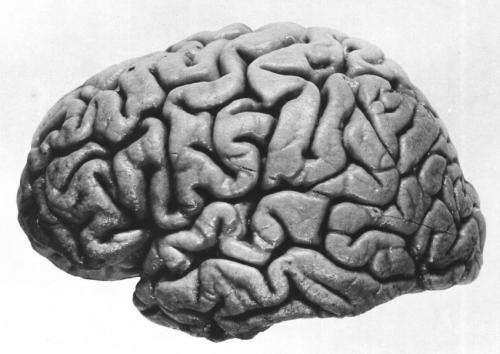Neuroscientists offer novel insight on brain networks

New research from the Center for Vital Longevity (CVL) at UT Dallas offers a different approach for looking at the way the brain operates on a network level, and could eventually lead to new clinical diagnostic criteria for age-related memory disorders.
The latest findings, published the week of Nov. 3 in the online early edition of the Proceedings of the National Academy of Sciences, focus on how brain areas communicate with one another to form brain networks, and how brain networks may change as we age.
"Brain networks consist of groups of highly interactive nodes, not much different than social and technological networks," said Dr. Gagan Wig, an assistant professor in the School of Behavioral and Brain Sciences at UT Dallas. "These nodes all communicate with one another in a large-scale brain network. A considerable amount of research has highlighted how older adults use different brain areas than younger adults when performing the same tasks. What the current approach offers is an evaluation of these differences in a broader context. By studying the brain as a network, we are in a sense adjusting our perspective – akin to examining the patterns that make up constellations of stars instead of focusing on each of the individual stars."
Wig and his colleagues examined how brain networks are composed of segregated sub-networks that mediate specialized functions. They found that increasing age is associated with decreased segregation of brain sub-networks. In addition, they found that less segregation among sub-networks predicts poor long-term memory, regardless of age.
"Because the degree of segregation of individuals' networks relates to memory ability, measuring an individual's network segregation may eventually help lead to clinical measures that could predict pathological decline," Wig said.
The findings stem from data collected by the center's Dallas Lifespan Brain Study, where healthy adults aged 20 to 89 completed cognitive assessments and resting-state functional MRI scans (i.e., participants were not doing a task during the scan), which allowed measurement of brain connectivity. A total of 210 adults were scanned and given cognitive assessments.
The data showed that brain networks in younger persons exhibit many intra-network connections for specialized processing of specific tasks, while actually having sparser inter-network connections that aid communication between networks, keeping them distinct. But the picture blurs as we age, with the brain network becoming progressively less specialized and less segregated between networks, Wig says.
In order to create a new measure of interconnectivity and efficiency on a global scale, Wig's lab used an area of mathematics called graph theory to characterize the segregation of brain networks. This approach has been used to study social networks such as Facebook, the Internet, the flow of public transportation, disease transmission, and even outbreaks of contagion.
More information: Decreased segregation of brain systems across the healthy adult lifespan, PNAS, www.pnas.org/cgi/doi/10.1073/pnas.1415122111

















